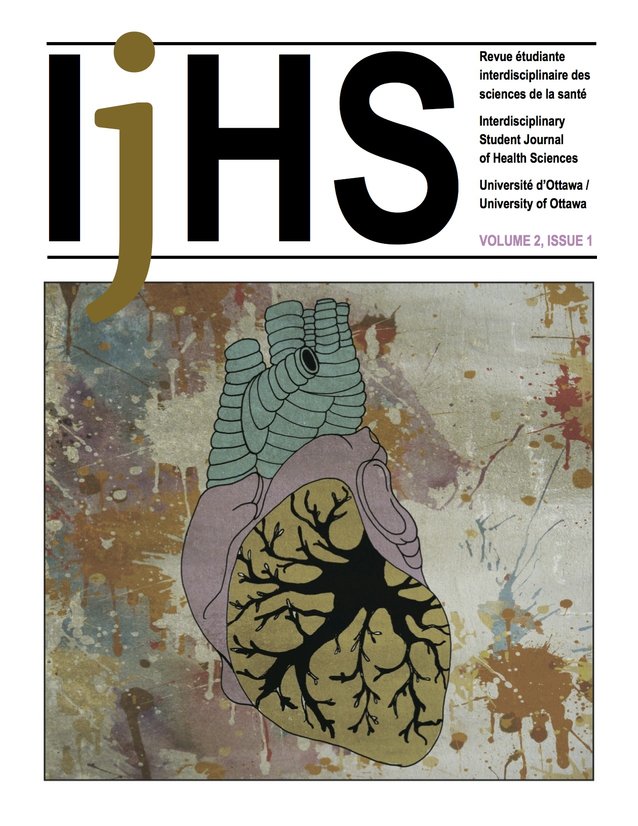The Risk of Prostate Cancer from Occupational Exposures in Male Firefighters
DOI:
https://doi.org/10.18192/riss-ijhs.v2i1.1524Keywords:
Firefighting, occupational exposure, prostate neoplasmAbstract
Prostate cancer is the most commonly diagnosed cancer among men. Since prostate cancer is a slow developing cancer, mortality can be prevented if the tumour is detected and treated in its early stages. There is proof that environmental exposures can increase the risk of prostate cancer. Many papers have performed data analyses on prostate cancer levels in firefighters. There has been some research on firefighter prostate cancer levels but few reviews on the topic. This paper focuses on finding whether there is a correlation between firefighting occupation and levels of prostate cancer. As well, this paper notes potential carcinogens within the firefighting occupation. Five papers were included in this review; these papers used different methods to obtain the cases and cohorts for the study. The papers also used different controls for comparison. Nevertheless, the papers found in the search supported a positive correlation between exposures in firefighting occupations and the level of prostate cancer. The two chemicals that were suspected carcinogens in these studies were Polyaromatic hydrocarbons (PAH) and fire smoke. However, future research can be more rigorous in calculations of prostate cancer levels by including lifestyle factors, other confounders such as smoking, and estimated length of exposure.
References
Bates, M. N. (2007). Registry-based case-control study of cancer in California firefighters. American Journal of Industrial Medicine, 50, 339-344. doi: 10.1002/ajim.20446
Bolstad-Johnson, D. M., Burgess, J. L., Crutchfield, C. D., Storment, S., Gerkin, R., & Winston, J. R. (2000). Characterization of firefighter exposures during fire overhaul. American Industrial Hygiene Association, 61, 636- 641.
Brandt-Rauf, P. W., Fallon, L. F., Tarantini, C. I., & Andrews, L. (1988). Health hazards of fire fighters: exposure assessment. British Journal of Industrial Medicine, 45, 606-612. Retrieved from http://www.jstor.org/ stable/27726658
Cancel-Tassin, G., & Cussenot, O. (2005). Prostate cancer genetics. The Italian Journal of Urology and Nephrology, 57(4), 289-300. Retrieved from http://europepmc.org/ abstract/MED/16247350
Coca, A., Williams, W. J., Roberge, R. J., & Powell, J.B. (2010). Effects of fire fighter protective ensembles on mobility and performance. Applied Ergonomics, 41, 636-641. doi: 10.1016/j.apergo.2010.01.001
Demers, P. A., Checkoway, H., Vaughan, T. L., Weiss, N. S., Heyer, N. J., & Rosenstock, L. (1994). Cancer incidence among firefighters in Seattle and Tacoma, Washington (United States). Cancer Causes and Control, 5(2), 129-135.
Fabian, T. Z., Borgerson, J. L., Gandhi, P. D., Baxter, C. S., Ross, C., Lockey, J. E., & Dalton, J. M. (2011). Characterization of firefighter smoke exposure. Fire Technology, 1- 27. doi: 10.1007/s10694-011-0212-2
Flinton, D. B. & Walters, N. J. (2005). Occupational activity and risk of prostate cancer in Ireland. Journal of Radiotherapy in Practice, 4, 102-106. Retrieved from http://dx.doi.org/10.1017/S1460396905000142
Golden, A. L., Markowitz, S. B., & Landrigan, P. J. (1995). The risk of cancer in firefighters. Occupational Medicine, 10(4), 803-820.
Guidotti, T. L. (1995) Occupational mortality among fire-fighters: Assessing the association. Occupational Mortality among Firefighters, 37(12), 1348-1356.
Guidotti, T. L. (2007). Evaluating causality for occupational cancers: the example of firefighters. Occupational Medicine, 57, 466-471. doi: 10.1093/occmed/kqm031
Haas, G. P., & Sakr, W. A. (1997). Epidemiology of prostate cancer. A Cancer Journal for Clinicians, 47(5), 273-287
Hassig, R. A. (1999, Fall). Evidence-based medicine [Newsletter]. Retrieved from http://library.uchc.edu/libpub/fall99.PDF
Hsing, A. W., & Chokkanlingam, A. P. (2006). Prostate cancer epidemiology. Frontiers in Bioscience: A Journal and Virtual Library, 1(11), 1388-1413.
Jankovic, J., Jones, W., Burkhar, J., & Noonan, G. (1991). Environmental study of firefighters. The Annals of Occupational Hygiene, 35(6), 581-602. doi: 10.1093/annhyg/35.6.581
Kang, D., Davis, L. K., Hung, P., & Kriebel, D. (2008). Cancer incidence among male Massachusetts firefighters, 1987-2003. American Journal of Industrial Medicine, 51, 329- 335. doi: 10.1002/ajim.20549
Krstev, S., Baris, D., Stewart, P., Dosemeci, M., Swanson, G. M., Greenberg, R. S.,...Hayes, R. B. (1998a). Occupational risk factors and prostate cancer in U.S. Blacks and Whites. American Journal of Industrial Medicine, 34(5), 421-430. doi: 10.1002/(SICI)1097-0274(199811) 34:5<421::AID-AJIM2>3.0.CO;2-T
Krstev, S., Baris, D., Stewart, P. A., Hayes, R. B., Blair, A. Dosemeci, M. (1998b). Risk for prostate cancer by occupation and industry: A 24-state death certificate study. American Journal of Industrial Medicine, 34(5), 413-420. doi: 10.1002/(SICI)1097-0274(199811) 34:5<413::AIDAJIM1>3.0.CO;2-R
LeMasters, G. K., Genaidy, A. M., Succop, P., Deddens, J., Sobeih, T., Barriera-Viruet, H.,... Lockey, J. (2006). Cancer risk among firefighters: a review and meta-analysis of 32 studies. Journal of Occupational & Environmental Medicine, 48(11), 1189-1202. doi: 10.1097/01.jom.0000246229.68697.90
Ma, F., Lee, D. J., Fleming, L. E., & Dosemeci, M. (1998). Race-specific cancer mortality in US firefighters: 1984-1993. Journal of Occupational and Environmental Medicine, 40(12), 1134-1138.
Prostate Cancer Canada. (2009). Statistics. Retrieved from http://www.prostatecancer.ca/
Pukkala, E., Martinsen, J. I., Lynge, E., Gunnarsdottir, H. K., Sparén, P., Tryggvadottir, L.,...Kjaerheim, K. (2009). Occupation and cancer – follow-up of 15 million people in five Nordic countries. Acta Oncologica, 48(5), 646-790. doi: 10.1080/0284186090291354
Youakim, S. (2006). Risk of cancer among firefighters: A quantitative review of selected malignancies. Archive of Environmental & Occupational Health, 61(5), 223-231. doi: 10.3200/AEOH.61.5.223-231
Downloads
Published
Issue
Section
License
- All authors published in the IJHS will retain copyright of their article.
- Authors grant the IJHS the right of first publication of their submitted articles.
- All articles published in the IJHS are licensed under a Creative Commons Attribution License that allows others to share articles if original authors and journal of initial publication are acknowledged.
- The IJHS is published online and in print, therefore the journal is not responsible for any unauthorized misuse of published content in either electronic or print form
- The IJHS retains the serial distribution rights to all contents
- It is the responsibility of the authors and not the IJHS to ensure proper permissions for all cited work have been obtained


